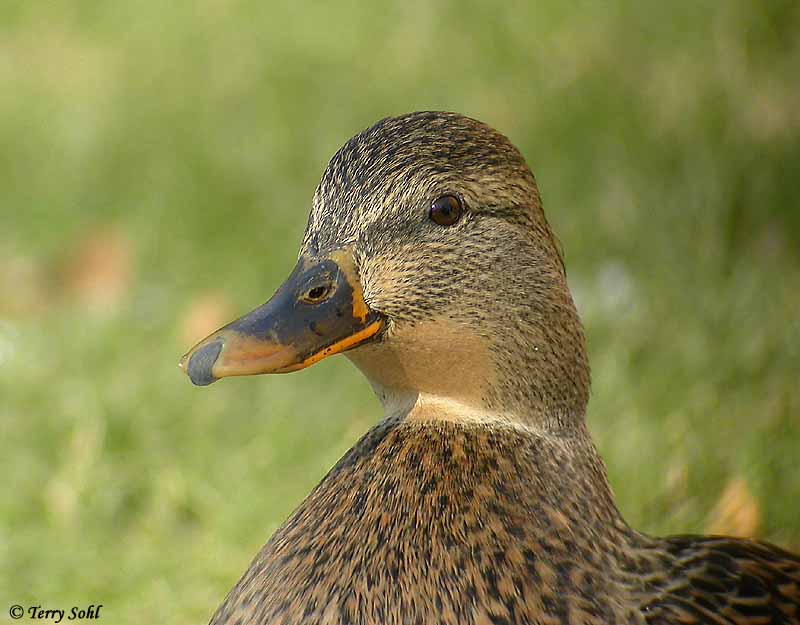Adaptations: How has the Mallard thrived?

Camouflage
These birds have developed feathers
that enable them to blend in to their habitat quite well. The
females have brownish feathers that mimic that of the marshes,
potholes, and smaller reed-covered waterways that make them
almost undetectable. The young have similar colored down before
they mature and grow their more distinctive feathers.
The males have their very distinctive green head, white ring
collar, and dark brown chest. The males, however, will lose much
of their coloration after breeding in the spring. This time
period is called the 'eclipse molt', where the males will also
lose their flight feathers until around August. Females will
also lose their flight feathers once the ducklings can fend for
themselves. Until they grow their flight feathers back, they are
unable to fly, and therefore must be able to blend in better
than normal, which is why they end up looking somewhat plain and
can avoid predation better.
Defending the Young
The males will leave the females to
raise the young ducklings on her own and will usually congregate
with other males. The females must be able to deter predators
using some interesting strategies. If a threat approaches, the
mother will sound the alarm by quacking loudly. If the threat
gets closer, she will usually fly away, leaving her ducklings
behind, trying to draw the predator away from the nest. The
ducklings have been taught to remain still and quiet. The mother
will sometimes (if they are in or near water) swim out into the
open water and flop around, as if she was injured. This is
another way to try and draw the threat away from the little
ones. Females are not afraid to attack or threaten other ducks
if they wander too close to their own ducklings. Despite all of
her tricks, she will be fortunate to keep four or five ducklings
through the summer.

Flight
The Mallard, unlike many other large
birds, has the ability to take off or 'explode' out of the water
almost vertically. Many other diving birds, such as the loon,
need a large area to take off. The Mallard almost jumps right
out of the water and can ascend rapidly before leveling off.
This is due to the enormous force generated by the wings, in
conjunction with the rapid paddling of its webbed feet. This
ability enables them to escape danger very quickly.
The Amniotic Egg
The ability for reptiles, birds, and
some mammals to
reproduce utilizing the amniotic egg. This egg is an
important feature of these terrestrial animals. The embryo can
develop without drying out, and it can survive in a variety of
habitats outside of water. The different sections of the egg
provide the embryo with water, food, and other nutrients, and
also removes and contains wastes. Oxygen and carbon dioxide can
easily diffuse through the shell also.
Other Physiological Adaptations
Webbed feet allow the Mallard to
paddle quickly and efficiently on the water and underwater if
necessary. Most birds that have webbed feet can move efficiently
through the water, but usually walk awkwardly on land. The
caudal arrangement (further towards the tail end compared to
other related birds) of the feet help the feet aid the Mallard
in walking less awkwardly.
The bill has been flattened out and uses well defined lamellae
for use in filter-feeding on items underwater in debris-filled
water.
Since the bill is optimized for filter-feeding and not biting
and tearing food, and does not have talons to tear apart food,
the Mallard needs an efficient way to digest the food it
consumes. Many birds have a gizzard to do this, in addition to a
true stomach. The gizzard is used to grind and squish the food
that is ingested. The Mallard will often swallow small rocks or
similar objects which travel down to the gizzard and aid in
breaking down the food. This food is then passed on to the true
stomach where most of the digestion will take place.
The feathers and buoyancy of the Mallard are also very important
given what type of
habitat the Mallard resides in. The Mallard is an
exceptional swimmer in the water, but it also must be able to
repel water. The feathers utilize oils that make it incredibly
water resistant.